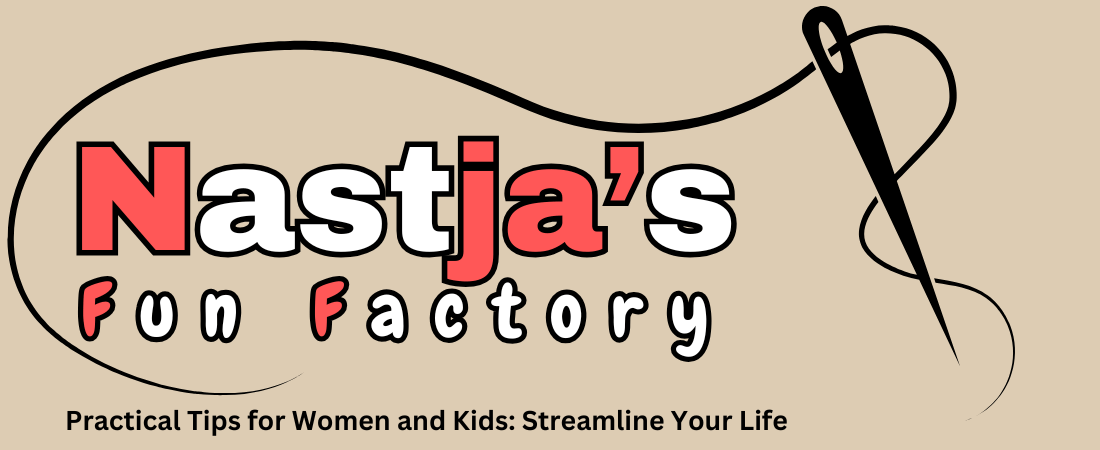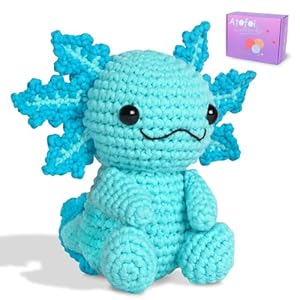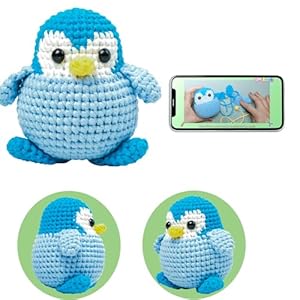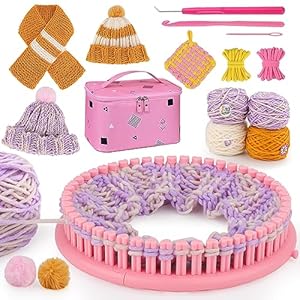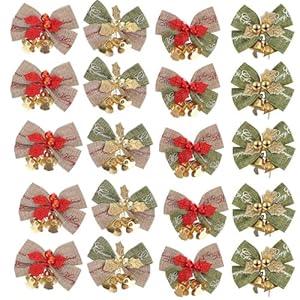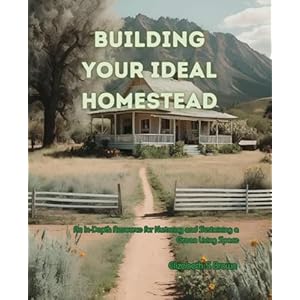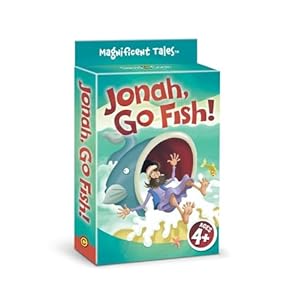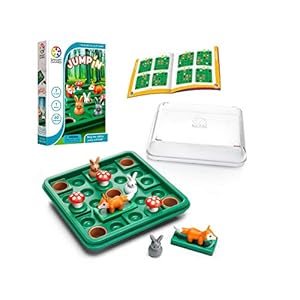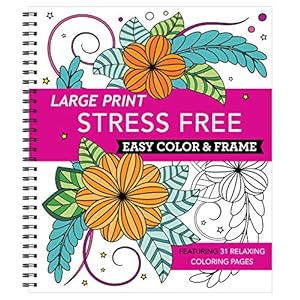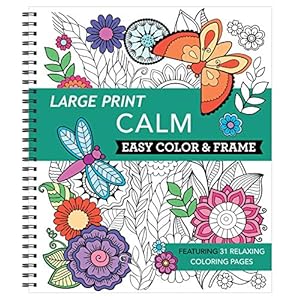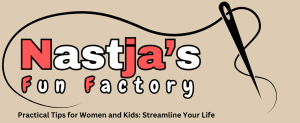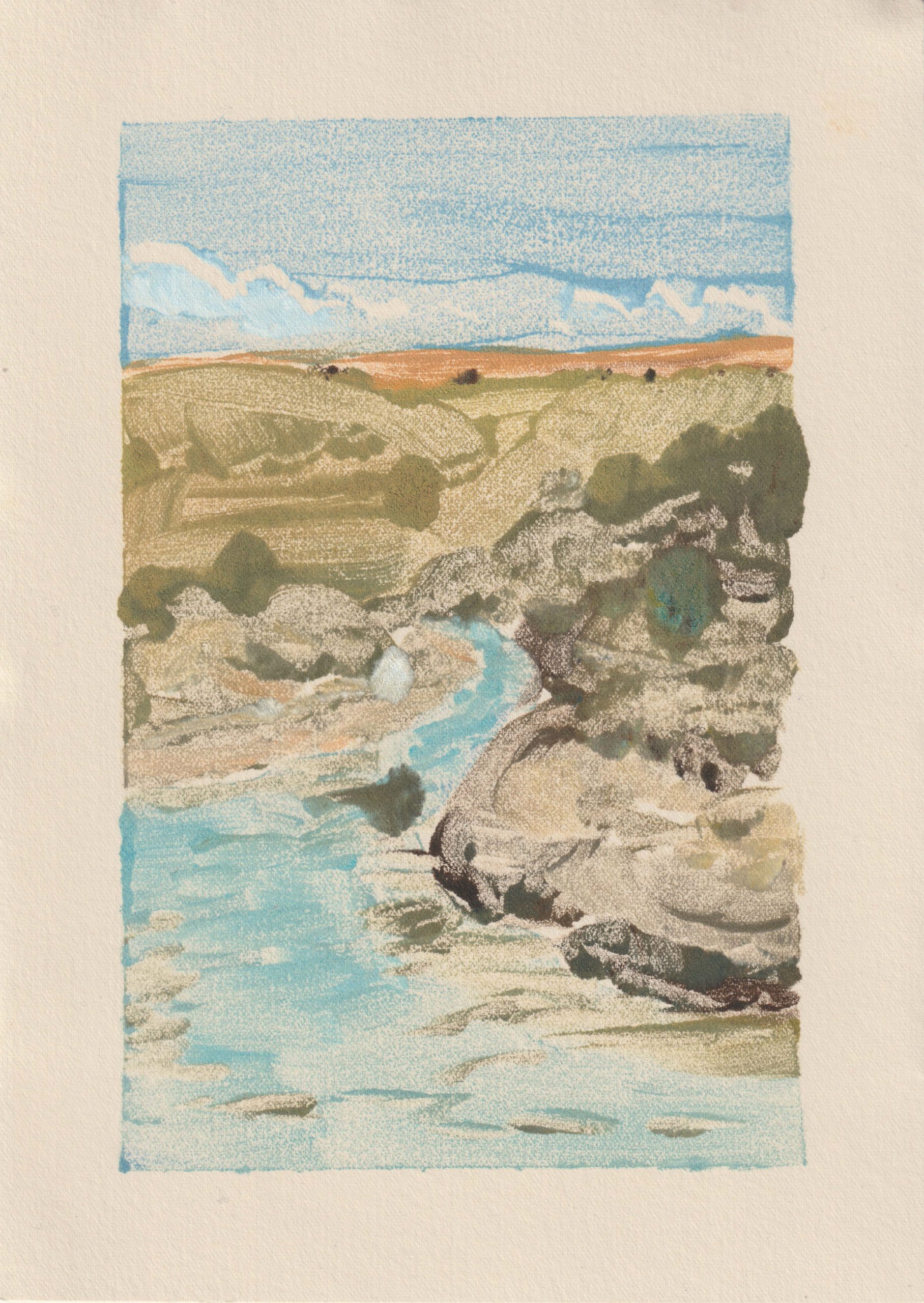
Natasha Motaghi won the Amateur Award in Jackson’s Art Prize this year with her work Waters of August. In this interview, she discusses the challenges of balancing her creative practice with a 9-5, how her work is informed by her collection of overheard words and phrases, and stepping into the landscape of a song.
Above image: Natasha in her studio

Waters of August, 2024
Natasha Motaghi
Monoprint on paper, 17.5 x 24.5 | 6.8 x 9.6 in
Josephine: Could you tell us about your artistic background?
Natasha: I was fortunate to grow up in a creative household on the outskirts of Manchester. My dad, a passionate painter, introduced me to drawing and painting from an early age. Every weekend, the dining table transformed into a makeshift studio where he would work with different mediums, and I would join in; painting, drawing, or making something crafty.
As a teenager, I carried this creative energy into my education, beginning with an art foundation course at Winstanley College – an experience I remain deeply grateful for. From there, I went on to study Illustration and Textiles at Falmouth University before completing my MA in Textiles at the Royal College of Art in 2023.
My practice has always explored the intersections of textiles and print, shaped by my background in illustration and design. The training I received gave me a strong foundation in colour, pattern, and composition – skills that continue to influence my work today.
Living in Cornwall for four years had a profound impact on me as well. Spending so much time along cliff edges and watching waves crash against the cliffs, even in the depths of winter, deepened my appreciation for the natural world, which continues to inspire my practice.
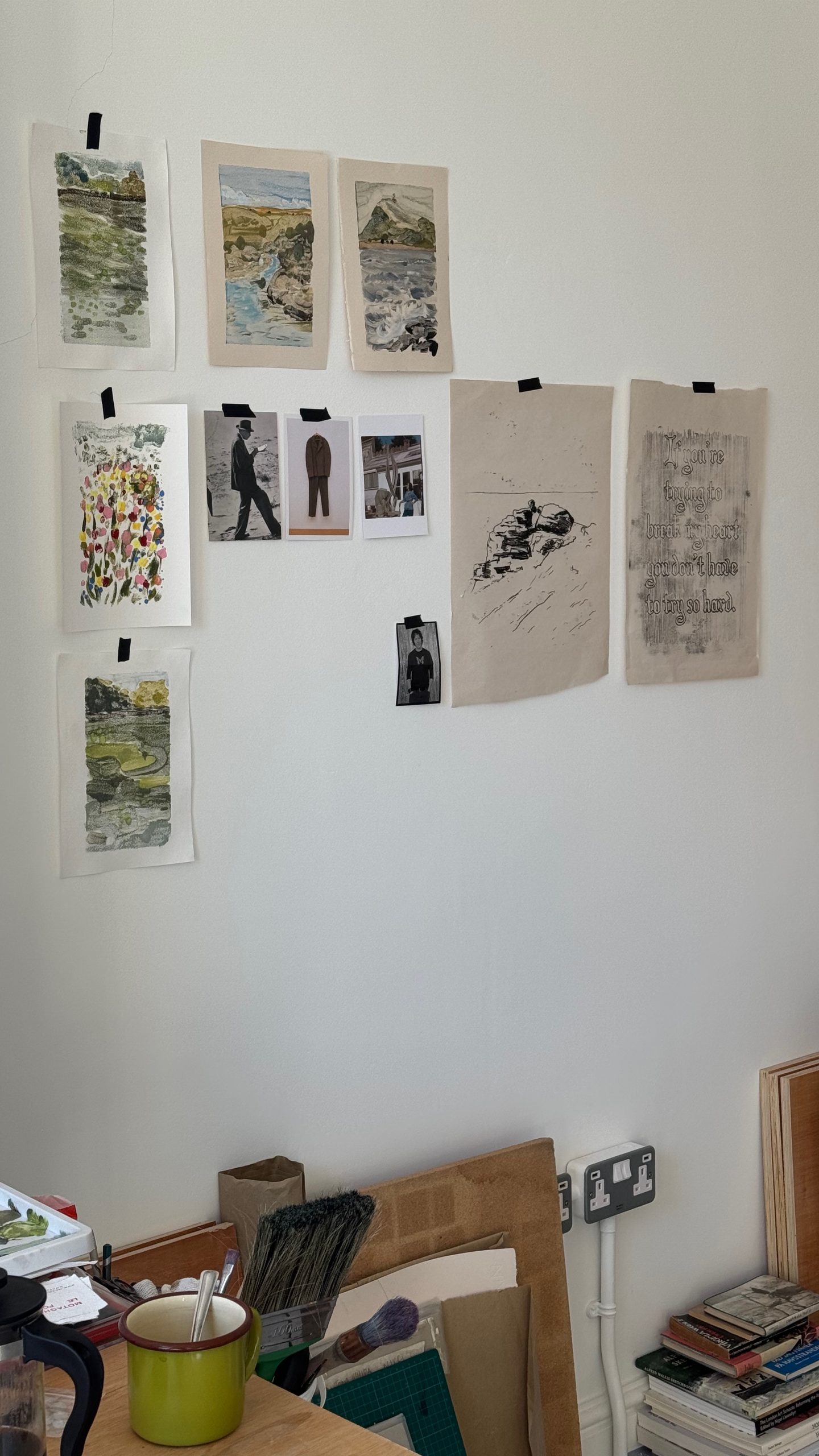
Studio wall
Josephine: What does a typical working day in the studio look like for you? Do you have any important routines or rituals?
Natasha: Last year, I moved into my first studio space in Stratford, part of GROW Studios and CLT, which has been a fantastic environment for me to expand my practice and work on larger-scale pieces. I usually cycle there, which is a great way to be outdoors before the day begins.
The first thing I do when I arrive is switch on Radio 6, the Sunday shows are a particular favourite, and that sets the tone in the studio. If I’m not listening to Radio 6, I will have a Northern Soul playlist on instead, this provides such a great upbeat and positive background to work to. Depending on what I’m working on, I’ll change into my scruffs and dive into a session of monoprinting. My approach to printing is very instinctive and spontaneous, and I rarely plan things out in detail. Instead, I follow an urge or feeling to get something down on paper. Sometimes I’ll create reference prints to refine later into black-and-white pieces, but often it’s simply a long, immersive session of experimenting with colours and letting the process guide me.
Alongside printing, I also develop textile works in my studio – handwoven pieces on my loom or large-scale quilts. Unlike printing, these projects are more structured and carefully planned, partly because I prefer not to mix dry and wet processes (and also because I’m a bit clumsy and would rather avoid oil paint splatters on my fabrics!).

Seaweed, 2023
Natasha Motaghi
Oil paint on newsprint, 21 x 29 cm | 8.2 x 11.4 in
Josephine: Which materials or tools could you not live without?
Natasha: I couldn’t live without oil-based printing ink – it’s by far my favourite material. Over the years, I’ve experimented with many different kinds of ink for monoprints, but oil-based ink has such a smooth, rich texture and doesn’t turn tacky the way others can. It allows me to work more fluidly and intuitively, which is essential to my process.
Another material I rely on is newsprint paper. I’ve tested countless types of paper across different price ranges, but nothing compares to the smooth surface and immediacy of newsprint. It gives me the freedom to work quickly and spontaneously, which I really value when printing, and if something goes wrong, it’s less of a big deal, just tear off a new sheet and start again.
As for tools, I keep things fairly simple. Many of the ones I use daily are the same tools I’ve carried with me since my first year at university; they’ve become a kind of extension of my practice over time.
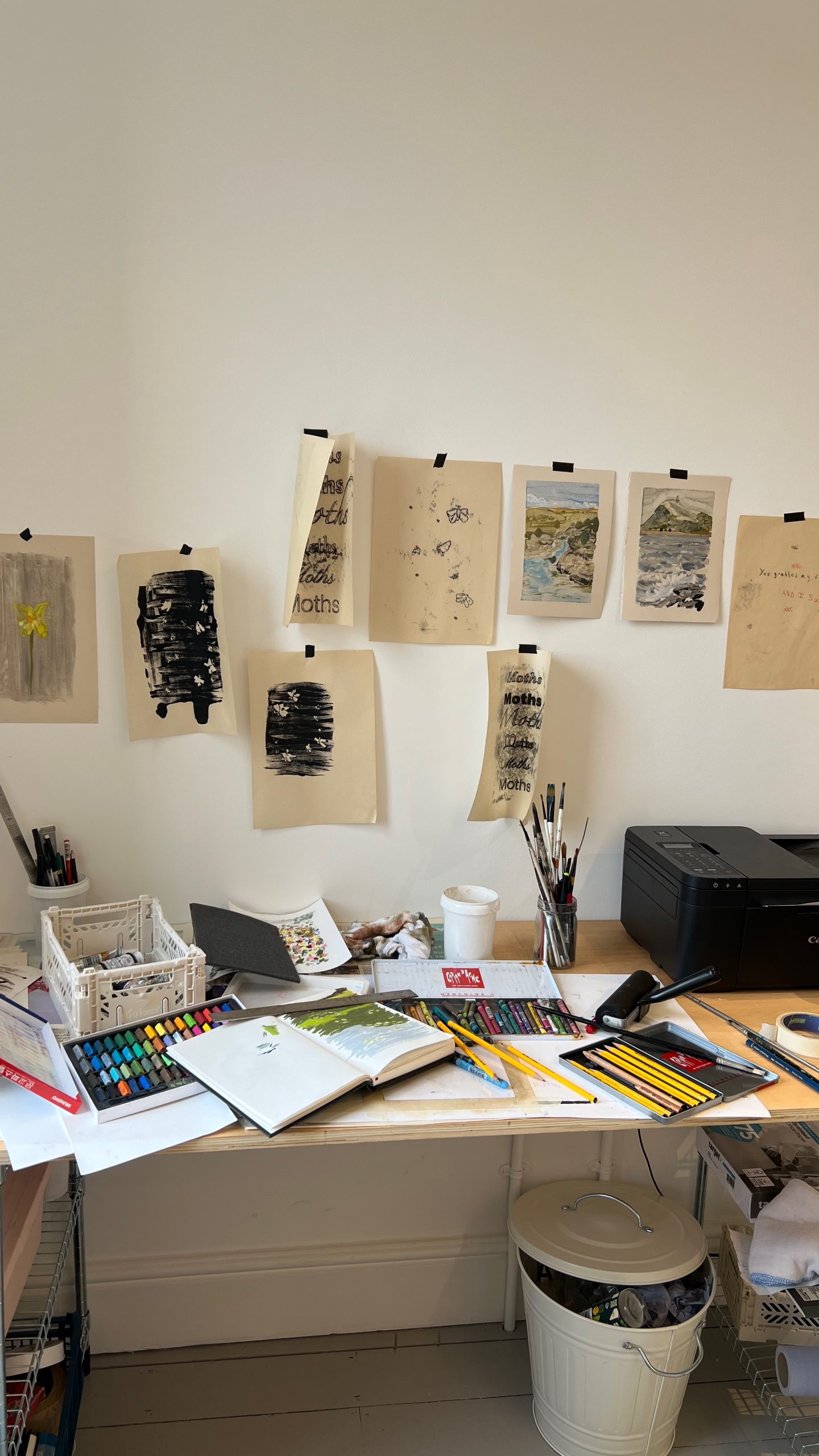
Studio desk, sketching
Josephine: Do you work from a reference? What is your process?
Natasha: Yes, I often use photography as my main reference point. I’ll usually crop the image or adjust the contrast before beginning a print, allowing me to focus on particular details or moods rather than reproducing the whole scene.
I’m also a collector of words and phrases. I keep a running list of quotes in the notes app on my phone, snippets I’ve picked up from the radio, overheard in conversation, found in books or songs, or even from my own inner monologue. These quotes often give me a theme to work around, guiding the mood or emotion I want a print to carry. More often than not, they also become the titles of my finished pieces.
Josephine: Do you regularly draw or keep a sketchbook? If so, how does this inform your work?
Natasha: Yes, although not in the same way I did at university, when my sketchbooks were overflowing with drawings and sketches. These days, my sketchbook is much more text-based than visual. I often fill it with words, notes, and ideas rather than images.
A big part of this process is working with the quotes I collect, exploring what they could mean out of context, how they might be decoded, and the different pathways or interpretations they could open up. I enjoy playing with this ambiguity, finding ways to make the words feel more cryptic through the imagery I eventually pair them with.
In many ways, it reminds me of studying poetry back in high school, searching for metaphors and hidden meanings, imagining what the author might have intended. That analytical yet creative process continues to shape how I develop my visual work today.

Monoprint process: oil paint on glass sheet, ready to be printed
Josephine: Have you ever had a period of stagnation in creativity? If so, what helped you overcome it?
Natasha: I actually feel like I’m in a bit of a creative block at the moment. Working full-time for a fashion brand in London makes it challenging to find the time and energy to be productive in my own practice. After a long week, the idea of diving straight into creative work can sometimes feel overwhelming.
In the past, I found a lot of inspiration by spending time outdoors and immersing myself in nature. That rhythm of walking, observing, and collecting visual references was really grounding for me, but trying to balance that alongside a 9–5 schedule has been more difficult.

Gylly beach, Falmouth, searching for inspiration
Josephine: Are there any specific artists or mentors who have inspired you?
Natasha: My GCSE art teacher was a hugely important mentor for me. Growing up in a small town in Salford, there wasn’t a big creative scene around me, so having someone who encouraged my skills and pushed me to explore further made a real difference. That early support gave me the confidence to see art as something I could pursue seriously.
Later, during my time at the RCA, the textile technicians became another set of invaluable mentors. Without their guidance, I don’t think I would have had the confidence to attempt large-scale pieces or spend entire days in the dye lab experimenting with colour. They taught me countless tricks for printing and fabric dyeing. Thanks to their support, I was able to create work I was truly proud of at a point when I wasn’t sure where my practice was headed.

Don’t Fall In, Ed!, 2024
Natasha Motaghi
Monoprint, oil paint on paper, 17.5 x 24.5 cm | 6.8 x 9.6 in
Josephine: What were you thinking about or exploring at the time you painted Waters of August? What inspired it, and how did it come to be?
Natasha: Waters of August was inspired by a walk I took in Seaford on an incredibly hot summer’s day. I had followed the Cuckmere River as the tide was too high to go over, and, as I made my way around to the other side, this striking scene suddenly opened up before me.
When creating the print, I was thinking about the intensity of that moment, the blazing sun, the way the milky blue of the river cut through the landscape, and the hidden wildlife tucked into the bushes, like skylarks. I wanted to capture both the stillness and the vibrancy of that environment.
Living in London, I often feel a strong urge to be surrounded by nature, and making these prints is a way of transporting myself back to those moments outdoors.

Printing process, newsprint and ink
Josephine: Why did this piece feel like the right one to submit?
Natasha: This piece felt significant because it was one of the first I created using coloured oil paints. Up until then, I had primarily worked with newsprint and printing ink for my monoprints, which often resulted in more illustrative outcomes. With Waters of August, I felt I was beginning to move in a new direction, experimenting with colour in a way that felt a lot fresher. This piece felt like the start of a new direction in my practice that I am keen to explore.
Josephine: How did it feel to move through the stages of the competition and win the Amateur Award?
Natasha: It was such an exciting experience! I know so many incredible artists who submit their work, so even being shortlisted felt like a huge achievement. As someone who creates art alongside a full-time job, it was a really proud moment to have my work recognised in that way. Winning the Amateur Award gave me a real boost of confidence and encouragement to keep pursuing my practice, even if it’s often just in the spare time I can carve out.

With My Bare Hands, 2022
Natasha Motaghi
Monoprint, ink on newsprint, 21 x 29 cm | 8.2 x 11.4 in
Josephine: How do you incorporate words and imagery into your practice to convey a sense of narrative or atmosphere within your work?
Natasha: The words I collect are always the starting point for my pieces; they form the foundation of what a work will become. As I mentioned, I keep all these quotes in my notes app on my phone, which has become one of my most valuable tools. Whenever I feel stuck or uncertain about an idea or emotion I want to express, I scroll through years of saved quotes for inspiration.
For example, when creating Waters of August, I had been listening to a lot of Simon & Garfunkel, particularly their cover of Waters of March, which was on repeat. When I arrived at the scene along the Cuckmere River, it felt as though I had stepped directly into the imagery of the song. That interplay between words, music, and the natural landscape became central to how I translated the experience into print, helping me convey both a narrative and an atmosphere within the piece.
Josephine: Are there any new materials or ideas you’re excited to explore using your prize?
Natasha: Absolutely! I’m excited to invest in more oil paints, as a lot of my paints are hand-me-downs from my dad, probably dating from the year 2007. I’m also keen to create larger-scale pieces, experimenting with mixed media to push the boundaries of my practice and see how different materials can interact in unexpected ways.

Studio
Josephine: What’s coming up next for you?
Natasha: I’m really looking forward to taking part in the winter artist residency at Mawddach this December. I plan to fully immerse myself in the Welsh countryside, embracing whatever the weather has in store, and draw inspiration from the natural surroundings.
Alongside that, I’ve been working on a series of text-based quilts. These are time-intensive projects, but I’m very excited about the prospect of sharing them with the world one day. Both opportunities feel like important steps in expanding my practice and exploring new ways of connecting with material, nature, and narrative.
Further Reading
Meet Eleanor Johnson, Winner of Jackson’s Art Prize 2025
Jackson’s Art Prize 2025 Exhibition at Affordable Art Fair
How We Collaborate With Artists
Expert Advice on Making Your Way as an Artist
Shop Monoprint on jacksonsart.com
The post Natasha Motaghi: Shaping Pictures From Words appeared first on Jackson's Art Blog.
Trending Products
